seed oils are healthy
-
@eduardo-crispino said in seed oils are healthy:
PMIDs: 21663641 & 12624485
Yes, omega 3 and some polyphenols extracts are anti-inflammatory but that's a short-term effect. They depress the system. Impact on the thyroid.
Studies seldom last longer than 12 weeks...Sources:
- Ray Peat , in The great fish oil experiment. 2007
http://raypeat.com/articles/articles/fishoil.shtml
Declaring EPA and DHA to be safe, the FDA neglected to evaluate their antithyroid, immunosuppressive, lipid peroxidative (Song et al., 2000), light sensitizing, and antimitochondrial effects, their depression of glucose oxidation (Delarue et al., 2003), and their contribution to metastatic cancer (Klieveri, et al., 2000), lipofuscinosis and liver damage, among other problems. -
- Ray Peat , in The great fish oil experiment. 2007
-
Are PUFAs toxic?
Video of Chris Masterjohn 30’
https://youtu.be/WRmUzYD8l7Q
CM earned a PhD in Nutritional Sciences from the University of Connecticut in 2012 and has researched the physiological interactions between fat-soluble vitamins A, D, and K at the University of Illinois, Urbana-Champaign.https://chriskresser.com/an-update-on-omega-6-pufas/
- Eat real food and balance your diet.
- Avoid industrial seed oils.
- Don’t go overboard with the nut flours.
- Eat pre-formed EPA and DHA (white fish).
Ray Peat PDr. – Kate Deering – Dr. Rita Lee – Etc.
Huile de poisson et effet sur la thyroïde
http://mirzoune-ciboulette.forumactif.org/t1388-huile-de-poisson-et-effet-sur-la-thyroide#15791
Effets anti thyroïde des oméga-3 (In French, translator needed) (See translation of the excerpt below)
Extrait
• L'administration d'ALA entraîne une réduction de 22% de la T3, la forme la plus puissante d'hormone thyroïdienne. Les taux de conversion de T4 à T3 diminuent de 56% en réponse à l'ingestion d’ALA. L'ALA interfère même avec les taux normaux de T3 si vous administrez préalablement du T4 dans les cellules. (2)
• Les animaux soumis à un régime riche en AGPI par rapport à un régime riche en AGS (avec de l’huile de maïs ou du saindoux) ont constaté une diminution importante de la réponse à l'hormone thyroïdienne chez les rats nourris avec des AGPI. (3)Translation (« Huile de poisson et effet sur la thyroïde »)
• ALA administration results in a 22% reduction in T3, the most potent form of thyroid hormone. T4 to T3 conversion rates decrease by 56% in response to ALA ingestion. ALA even interferes with normal T3 levels if you pre-administer T4 into the cells. (2)
2. http://www.ncbi.nlm.nih.gov/pubmed/1815532
• Animals fed a high PUFA diet compared to a high SFA diet (with corn oil or lard) experienced a significant decrease in thyroid hormone response in PUFA-fed rats. (3)
3. http://www.jbc.org/content/256/14/7113.full.pdf+htmlExcerpt 1 from: Arachidonic acid causes an uncoupling effect and inhibits cellular respiration
https://www.sciencedirect.com/science/article/pii/S0891584999000349
“It is shown that arachidonic acid causes an uncoupling effect under state 4 respiration of intact mitochondria as well as a marked inhibition of uncoupled respiration.
Excerpt 2 from: Unsaturated Vegetable Oils: Toxic
http://www.raypeat.com/articles/articles/unsaturated-oils.shtml- To defend the seeds from the animals that would eat them, the [PUFA]-oils block the digestive enzymes in the animals' stomachs.
- Their tendency to oxidize is very great. These oxidative processes can damage enzymes and other parts of cells, and especially their ability to produce energy.
The enzymes which break down proteins are inhibited by unsaturated fats, and these enzymes are needed not only for digestion, but also for production of thyroid hormones, clot removal, immunity, and the general adaptability of cells. The risks of abnormal blood clotting, inflammation, immune deficiency, shock, aging, obesity, and cancer are increased. Thyroid and progesterone are decreased. Since the unsaturated oils block protein digestion in the stomach, we can be malnourished even while "eating well."
*) Useful info: How much oleic acid or PUFA has an impact ?
Drug-induced increases in T4 free fraction were: fenclofenac, 90%; aspirin, 62%; meclofenamic acid, 39%; diflunisal, 37%; mefenamic acid, 31%; and furosemide, 31%. Significant increases of 7-15% occurred with diclofenac, flufenamic acid, phenylbutazone, and diphenylhydantoin. Indomethacin, ketoprofen, tolmetin, ethacrynic acid, bumetanide, iopanoate, and ipodate were inactive at the concentrations studied. Addition of 2.0 mmol/L oleic acid had a negligible effect, but 3.5 mmol/L oleic acid inhibited T3 and T4 binding significantly. Other long chain NEFA (addition of 1.5 mmol/L) gave increases in free T4 fraction as follows: arachidonic acid, 26%; linolenic acid, 23%; and linoleic acid, 11%. Stearic and palmitic acids were inactive. The effect of 5 mmol/L oleic acid in serum could be reproduced by addition of 0.5 mmol/L to serum diluted 1:10, indicating that protein binding of NEFA is the major determinant that limits their competitor potency. These findings provide a basis for anticipating which potential inhibitors may cause important changes in serum thyroid hormone binding. The time course of such effects will be influenced by the pharmacokinetics of the inhibitor itself as well as the equilibrium findings described here.
DOI: 10.1210/jcem-67-4-682 1988. Drug and Fatty Acid Effects on Serum Thyroid Hormone Binding
NEFA = Non-esterified fatty acid = FFA -
[Article in Russian]
M Ia Vysheslavova, I N Kozlova
PMID: 1198985
Abstract
Non-pedigree rats were injected subcutaneously either overheated oil or the oil and one of unsaturated fatty acids (linoleic, linolenic, oleic acids), or overheated oil and fresh oil. The greatest number of tumors in earlier terms occurred in the group of rats not receiving fatty acids. In simultaneous injection of overheated sunflower oil and fatty acids (oleic and linolenic), as well as fresh oil, tumors would arise considerably more rarely. Whereas, in injection of overheated sunflower oil and linoleic acid tumors did not arise at all. The mechanism of an inhibitory action of fatty acids on tumor development is discussed.

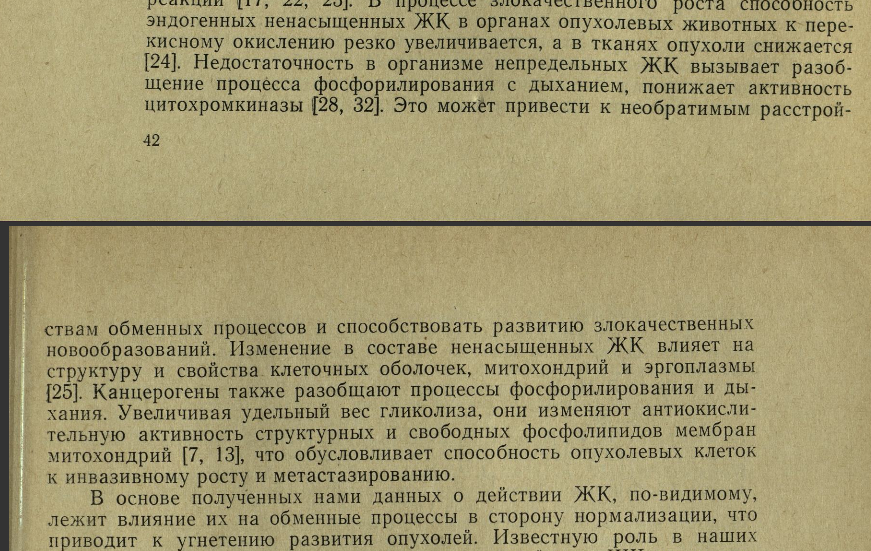
-
@Gardner said in seed oils are healthy:
Whereas, in injection of overheated sunflower oil and linoleic acid tumors did not arise at all. The mechanism of an inhibitory action of fatty acids on tumor development is discussed.
hm... can you translate the idea? How is over-heating changing the makeup / composition before it is consumed?
-
-
@Corngold said in seed oils are healthy:
How is over-heating changing the makeup / composition before it is consumed?
There are 2 levels of fat alteration when heating:
- Oxidative level
- PAH
At high temperatures organic compounds are partially cracked to smaller unstable fragments (pyrolysis), mostly radicals, which recombine to give relatively stable PAHs (pyrosynthesis).
PAH = Polycyclic Aromatic Hydrocarbons.
=> Polycyclic aromatic hydrocarbons in edible fats and oils: occurrence and analytical methods
https://doi.org/10.1016/S0021-9673(00)00079-0 2000
-
This post is deleted! -
@Corngold said in seed oils are healthy:
uh... I don't know what's real anymore
Unsaturated lipid avoidance or depletion was never my takeaway either. I settled on ratios but joked with myself that might just be easier for me. I was already eating a lot of butter. I am a fake peater and this is my story.
-
"Some nasty comments on this one so I set moderation to strict, sorry if some good comments get removed. Debate is welcome, name calling and insults are not."
lol, poor chap.
Avoidance or depletion may just be a cope until someone can describe a missing factor or decipher it from what Ray already described. I think it's there personally, I just don't know how to put it. Working on that.
-
This post is deleted! -
Your guess as good as mine. The stated reason of "a bit" of vitamin E for "2 or 3 tablespoons" of seed oils is stupid to me. But that fits in other ways.
-
This post is deleted! -
@ThinPicking
Well I don't cook with canola anymore. I still get some zog from purchased foods and meat but at least I know beyond reasonable doubt that it is the big culprit in metabolic dysfunction. The smell of hot canola or even olive oil makes me gag. -
@Gardner I think that PUFA is mitochondrially toxic to regular cells as well as cancer cells.
-
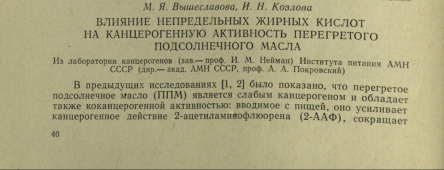

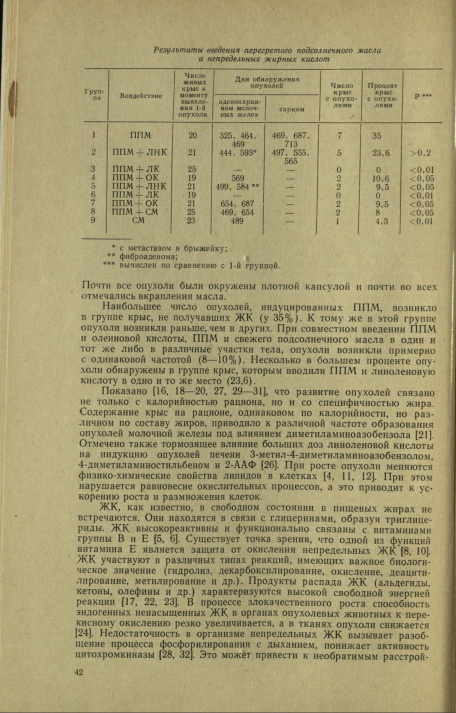
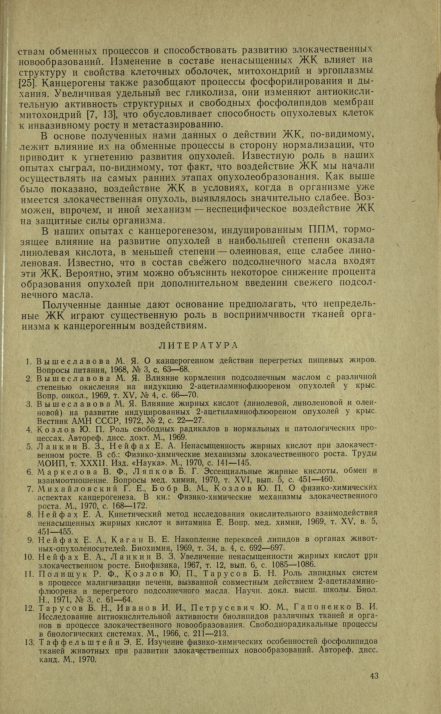
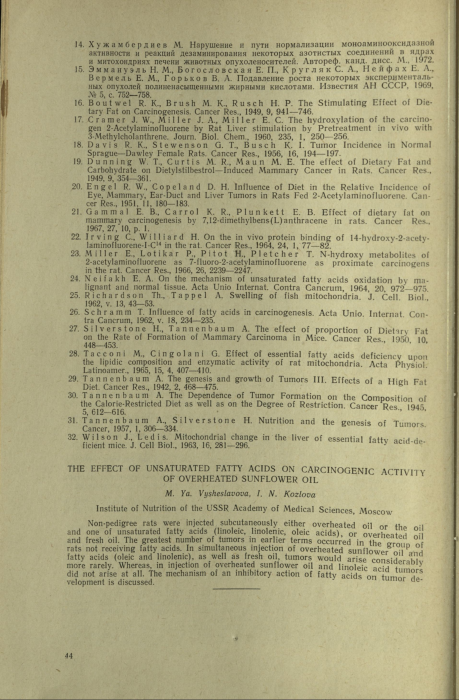
-
I can speculate that in the experiment above the pure linoleic acids got conjugated (CLA ). Indeed, CLA has anticancer properties.
The term conjugated linoleic acid (CLA) refers to a mixture of linoleic acid positional and geometric isomers, characterized by having conjugated double bonds, not separated by a methylene group as in linoleic acid.
Sources of CLA:
CLA is found in dairy products and meat, particularly from ruminants (like cows).An overview of the effect of linoleic and conjugated-linoleic acids on the growth of several human tumor cell lines
While linoleic acid exerted different effects, ranging from inhibitory to neutral, even promoting growth, conjugated linoleic acid inhibited growth in all lines tested and was particularly effective against the more malignant cells, with the exception of mammary tumor cells, in which behavior was the opposite, the more malignant cell line being less affected. -
This post is deleted! -
@BroJonas said in seed oils are healthy:
@Gardner I think that PUFA is mitochondrially toxic to regular cells as well as cancer cells.
Why do you think so ?
-
@Gardner said in seed oils are healthy:
Why do you think so ?
All unused PUFA will cause problems. max 5-7 g but only if you eat bone broth. Glycine is required. otherwise, it could be less. No need every day as well.
PUFA are carcinogenic, dietary glycine blocks their effect
http://carcin.oxfordjournals.org/content/20/11/2095.long ++
=> The findings apply to all oils containing enough PUFA to give you a dose of 5g - 7g per serving. 10g - 15g of glycine would be sufficient to block common uptake of PUFA’s. Combined with vitamin E (500 mg), even lower dose of glycine may be sufficient.Glycine as prevention for cancer treatment
https://raypeatforum.com/community/threads/glycine-as-prevention-and-treatment-for-cancer.7579/
Glycine is one of the most potent inhibitors of VEGF (Vascular endothelial growth factor) and many of the current blockbuster drugs are VEGF inhibitors. However, I think the more fundamental reason for glycine's effects are its opposition to PUFA, serotonin, estrogen, endotoxin (called LPS in the study below) and their anti-metabolic effects. -
This post is deleted!
